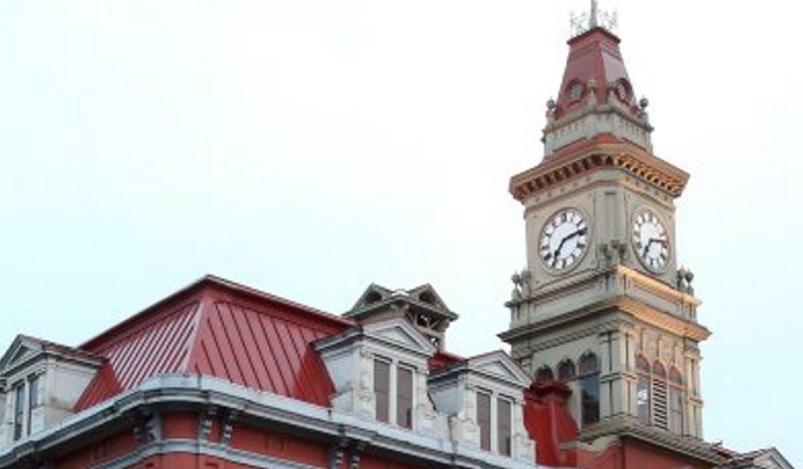Victoria residents can expect leaner mayoral campaigns from candidates this fall as new spending limits kick in for the first time.
“That’s where volunteer power is really going to come in on this campaign,” said Mayor Lisa Helps.
She said the spending limit is reasonable.
“Elections are about people — and they’re about people wanting to come and support you, or me in this case. The volunteer power is how we won the last election, and volunteer power is what we’ll use to make up for any of those dollars we can’t spend because of the cap.”
The top three mayoral candidates in the last election all would have been well over the new spending cap of $54,121 for Victoria mayoral candidates had it been in place at the time.
In 2014, then-mayor Dean Fortin spent $128,636 in an unsuccessful bid for re-election; former B.C. Liberal cabinet minister Ida Chong, who placed a distant third in that race, filed election expenses of $108,120, with $80,985 of that coming from corporations.
Helps, who edged out Fortin by just 89 votes, filed expenses of $88,564, with nothing coming from unions, $34,292 donated by corporations and $10,581 from unincorporated business or commercial operations.
This time out, the financial landscape has changed considerably.
Under legislation that came into law under the previous B.C. Liberal government, there are new candidate expense limits based on the office someone is seeking and the population of the election area.
New rules ban contributions from organizations, corporations and unions. That means only individuals can financially support a candidate — and only up to $1,200 per donor.
Sean Leitenberg, who is challenging Helps, said a successful campaign can be brought in for between 10 and 20 per cent of the $54,000 spending limit.
He said he is encouraged by the early reception to his campaign, but said the amount of money he has raised at this point is confidential.
Gary Beyer, who will also challenge Helps, said he expects to possibly spend $25,000 to $30,000 on his campaign. “Fundraising right now is slow but steady,” he said.
In the capital region. it’s not the cap on spending but rather the restrictions on who can and can’t contribute that likely will have the most impact.
For example, in the last Saanich election both major candidates — former mayor Frank Leonard who was defeated by current Richard Atwell — would have been under the new Saanich mayoral spending limit of $70,475.
But big chunks of their campaign funding would not be permitted under the new rules.
More than half of the $62,371 spent by Leonard’s campaign came from corporate and commercial donors — something the new rules prohibit.
Likewise Atwell, who spent $52,838 last time out, listed more than $14,600 in corporate donations. He contributed $21,000 of his own money — almost 10 times the new $2,500 limit for candidates themselves.
Atwell could not be reached for comment.
Saanich Coun. Fred Haynes, who is challenging Atwell in October, said the new spending limits are “very generous” and perhaps even advantageous to incumbents because of their name recognition.
“If there was a way to do this, I would have thought that a better regulation would have been that new candidates get a larger budget, as an example, than incumbents,” Haynes said. “But how to balance and do that fairly is something that would need wide consultation.”
While none of the 2014 Victoria council candidates would have been over the 2018 Victoria spending cap of $27,416, some will be affected by the new prohibition on union and corporate donations.
For example, Victoria Coun. Ben Isitt declared that $12,514 of the $25,821 in campaign contributions he received in 2014 came from unions, including $5,500 from CUPE 50, the city employees’ local.
“I did welcome contributions from union members previously and I continue to do so, [but] in this election it will be on an individual basis,” Isitt said. “So my strategy hasn’t changed in any significant way.”
He said he supports the spending limits but he would have preferred to have seen the legislation make a distinction between organizations such as co-operatives or trade unions and corporations.
Of the $22,478 in campaign contributions Coun. Jeremy Loveday received, $10,811 came from trade unions. Of that, $4,500 was from CUPE 50.
The cost of running for municipal office drops considerably outside Saanich and Victoria.
Candidate expense limits by jurisdiction are:
• Victoria: mayor $54,121.50; councillor $27,416.40
• Saanich: mayor $70,475.20; councillor $35,741.92
• Esquimalt: mayor $16,044.45, councillor $8,031.72
• Oak Bay: mayor $17,044.35; councillor $8,540.76
• Sidney: mayor $11,349; councillor $5,674.50
• North Saanich: mayor $11,093; councillor $5,546.50
• Central Saanich: mayor $15,667.15; councillor $7,839.64
• View Royal: mayor $10,380; councillor $5,190
• Highlands: mayor $10,000; councillor $5,000
• Colwood: mayor $16,623.60; councillor $8,326.56
• Langford: mayor $27,824.35; councillor $14,028.76
• Metchosin: mayor $10,000; councillor $5,000
• Sooke: mayor $13,957; councillor $6,978.50
bcleverley@times colonist.com



